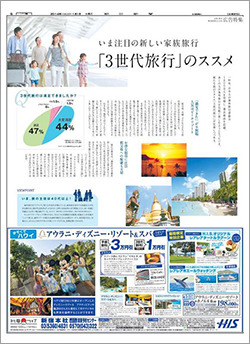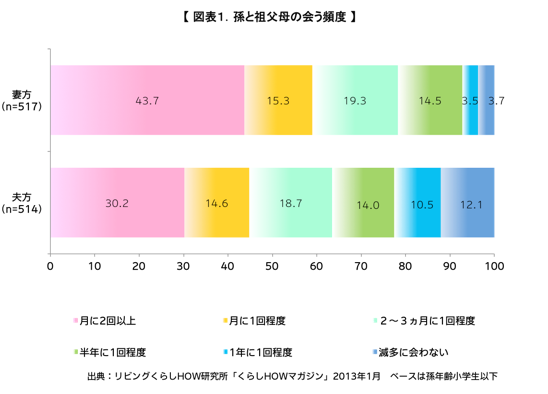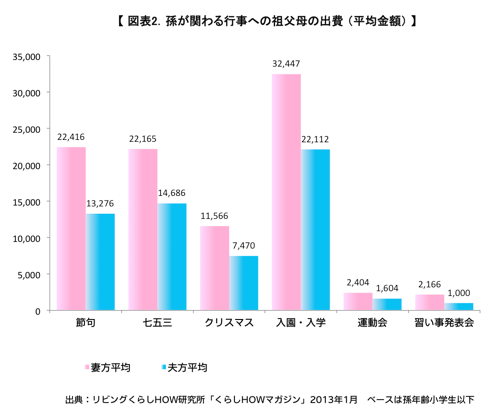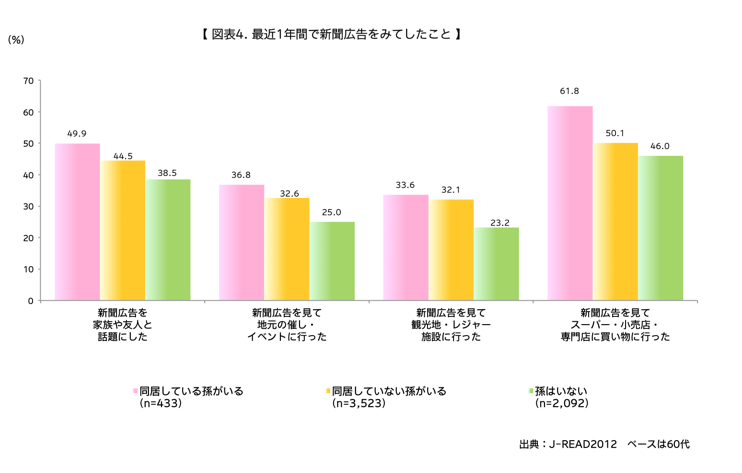For newspaper media, this is a time of great transformation. Precisely because of this, newspaper advertising can now take on various challenges, and the scope of advertising creativity has expanded significantly. In this column, Dentsu Inc. Media Services / Newspaper Division staff will deliver the forefront of newspaper advertising, themed around "What newspaper media can do now. What can only be done now."

The logo deliberately uses katakana to express a free approach unconstrained by traditional "newspaper" imagery, while simultaneously infusing it with the momentum of a leap.
The column will primarily run in a series covering the following three themes:
●New Marketing Trends Starting with Newspapers
● Interviews with External Experts
● What Newspapers Can Do for Tohoku's Recovery
We will also weave in timely topics as they arise!
【Issue 1】 Newspaper-Driven Marketing: A New Trend "Three-Generation Consumer Marketing (Part 1)"
 Haven't you noticed an increase in ads themed around "three-generation consumption" lately? Three-generation Disney trips, three-generation vacations, three-generation discounts... Even if they don't explicitly state "three generations," ads featuring three-generation families in their creative expressions are common. Newspaper ads, in particular, are frequently used as a direct communication tool targeting the grandparent generation. Furthermore, in today's certification craze, things like "Grandchild-Raising Certification" have been offered, and around year-end, companies sold "Three-Generation Osechi" sets.
Haven't you noticed an increase in ads themed around "three-generation consumption" lately? Three-generation Disney trips, three-generation vacations, three-generation discounts... Even if they don't explicitly state "three generations," ads featuring three-generation families in their creative expressions are common. Newspaper ads, in particular, are frequently used as a direct communication tool targeting the grandparent generation. Furthermore, in today's certification craze, things like "Grandchild-Raising Certification" have been offered, and around year-end, companies sold "Three-Generation Osechi" sets.
This three-generation consumption overlaps with previously discussed concepts like "baby boomer marketing," "six-pocket households," and the "senior market." However, with the children of the baby boomers—the so-called "baby boomer juniors"—entering their child-rearing years, it seems to be becoming a new marketing trend. Speaking for myself, my grandmother's support is indispensable for juggling work and childcare. I can't help but feel opportunities for three-generation consumption are naturally increasing...
Upon closer examination, it became clear that precisely because of the current era, "three-generation consumption" is being embraced by people as something meaningful. In this first part, I'd like to explore its affinity with the background of this era.
1. Mother-Daughter Consumption Drives It! Increased Intergenerational Communication Due to the Rise of Matrilineal Families
Traditionally, grandchildren from the daughter's side were called "outside grandchildren" and felt a bit distant to grandparents. They wanted to dote on them, but they were their daughter's children who had married into another family... However, today, as seen in what's called "mother-daughter consumption," biological mothers and daughters have strong bonds. They go shopping and travel together, sharing clothes and accessories. This relationship often continues even after marriage and childbirth. With these mother-daughter pairs acting as hubs, intergenerational communication is becoming more active, potentially fueling the growth of three-generation consumption.
Data reveals overwhelmingly higher involvement from maternal grandparents. While 30.2% of paternal grandparents see their grandchildren twice a month or more, maternal grandparents do so at 43.7%—a gap of over 10 percentage points (Chart 1).

Similarly, spending by maternal grandparents on events involving their grandchildren is significantly higher (Figure 2). It seems fair to say that three-generation consumption is expanding alongside the rise of matrilineal families.

2. Women's Increased Participation in the Workforce and Growth of Dual-Income Couples
As women increasingly enter the workforce and dual-income couples become more common, the need for regular grandparent support in daily life is growing. As of 2017, only about 10% of grandparents lived with their grandchildren. However, when including those who live nearby and can see their grandchildren easily, approximately 75% have regular contact with their grandchildren. Notably, since 2017, the trend of living nearby shows a clear increase (Figure 3). Grandparents are also reliable support figures for childcare.

Furthermore, people with grandchildren may exhibit more active consumption behavior compared to those without. In terms of "actions taken after seeing newspaper ads in the past year," the percentage of various responses is higher. Communication with grandchildren may be driving increased consumption (Figure 4).

However, caution is needed as these surveys primarily target the Tokyo metropolitan area. Dentsu Inc.'s Media Services / Newspaper Division plans to conduct joint surveys with newspapers in the future, including regional areas, to examine regional differences.
3. Socioeconomic Background: Declining Birthrates, Aging Population, and Social Inequality
Due to the declining birthrate and aging population, along with the prolonged recession, salaries remain stagnant while public burdens continue to grow. The generation raising children, facing rising education costs, feels this burden most acutely. Approximately 60% of the roughly 1,500 trillion yen in personal financial assets is held by those aged 60 and over. It is a natural trend for families to rely financially on grandparents or to consume together as a family unit, creating an incentive to curb overall spending. With future consumption tax hikes and other factors, the situation for household finances will remain tough. As the desire to protect one's livelihood grows, opportunities for intergenerational consumption may increase further.
Marketing is a mirror reflecting the times. Marketing trends emerging from such era-specific contexts often show sustained growth and expansion. Rather than a fleeting marketing fad, three-generation consumption is likely to surface across various domains and phenomena going forward.
For an effective approach to three-generation consumption, direct communication with the grandparents' generation is essential. In my next column, I'll discuss the effectiveness of using newspaper ads to communicate with grandparents and further explore the key points for successful three-generation consumption marketing.



 Haven't you noticed an increase in ads themed around "three-generation consumption" lately? Three-generation Disney trips, three-generation vacations, three-generation discounts... Even if they don't explicitly state "three generations," ads featuring three-generation families in their creative expressions are common. Newspaper ads, in particular, are frequently used as a direct communication tool targeting the grandparent generation. Furthermore, in today's certification craze, things like "Grandchild-Raising Certification" have been offered, and around year-end, companies sold "Three-Generation Osechi" sets.
Haven't you noticed an increase in ads themed around "three-generation consumption" lately? Three-generation Disney trips, three-generation vacations, three-generation discounts... Even if they don't explicitly state "three generations," ads featuring three-generation families in their creative expressions are common. Newspaper ads, in particular, are frequently used as a direct communication tool targeting the grandparent generation. Furthermore, in today's certification craze, things like "Grandchild-Raising Certification" have been offered, and around year-end, companies sold "Three-Generation Osechi" sets.



